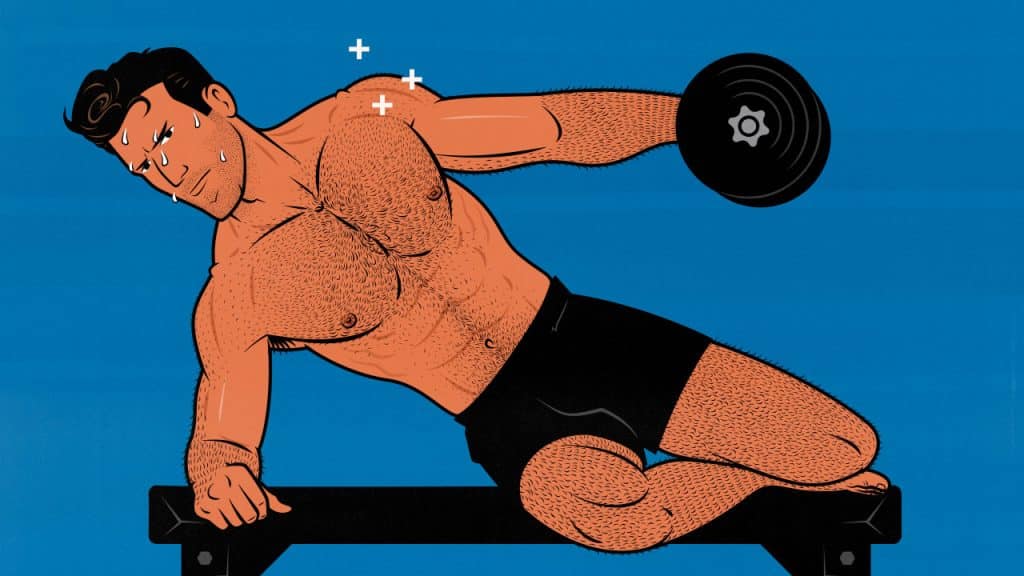
The Best Side Delt Exercises Are Weird Lateral Raises
The overhead press is the best overall shoulder exercise. If you want a minimalist workout routine, that’s all you need. If you really want to build bigger side delts, though, it pays to include an exercise that trains them directly.
Lateral raises are the best exercise for your side delts, and they can take you quite far, but you can do even better. Lateral raises are easy to improve upon. Here’s how.
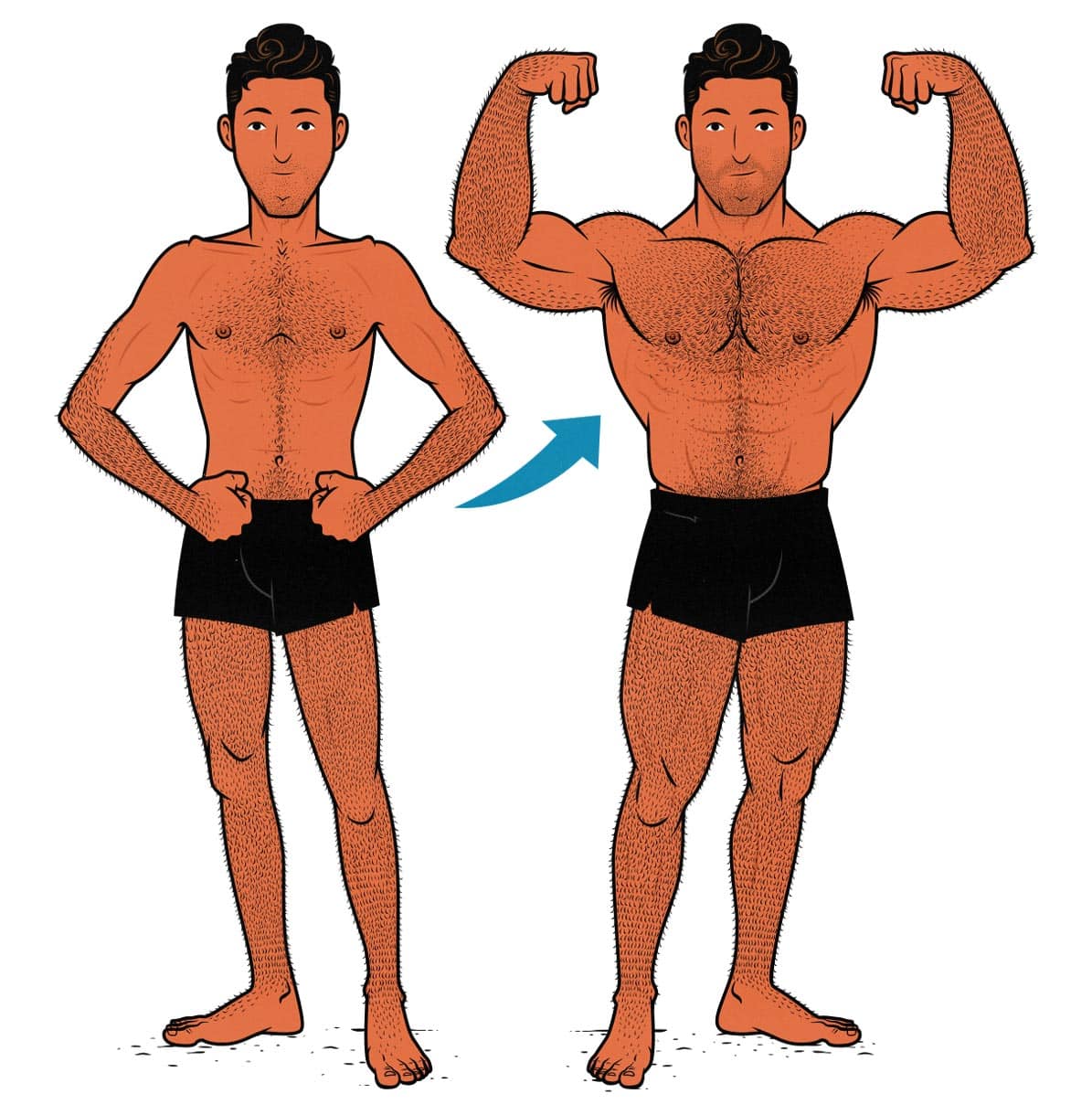
Side Delt Tutorial Video
Sometimes, exercises are easier to explain with a video. So, I made a quick tutorial video teaching the best side delt exercises and explaining what makes them so effective.
If you’d rather read, I cover all the same information in the article. You won’t miss out on anything. Onwards.
Side Delt Anatomy
“Side Delt” is the casual term for your medial deltoids, often erroneously called the lateral deltoids. These are the muscle fibres that run along the sides of your shoulders, making your shoulders broader. That’s why side delt exercises are so popular.
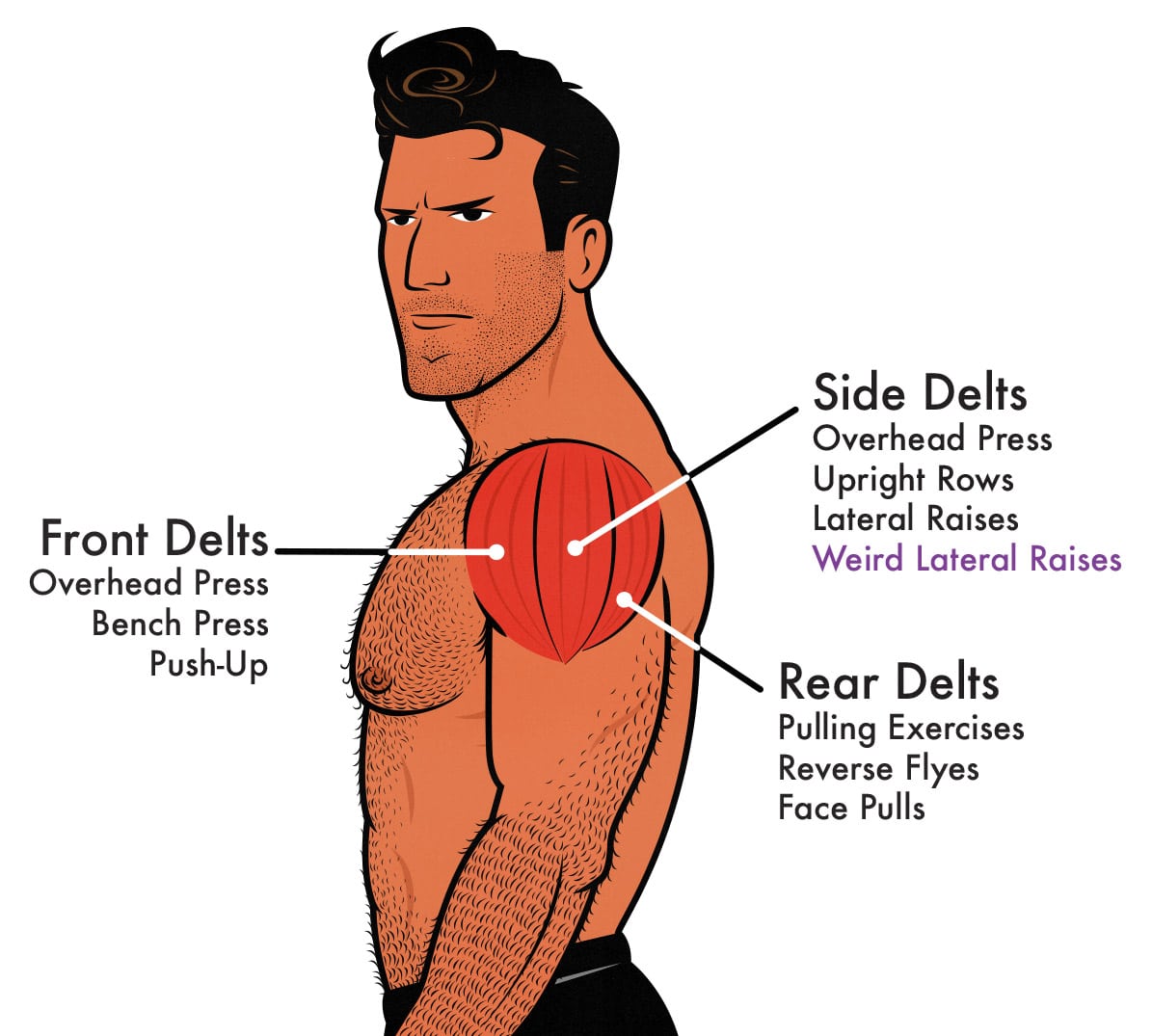
All three of your deltoid muscles overlap and assist each other. Instead of just looking at the black lines that separate your shoulders into three sections, consider the fainter lines that divide your shoulders into nine sections. Different exercises prioritize some sections over others.
However, your side delts have a particular function. They’re responsible for raising your arms out to the sides, like when you do lateral raises:
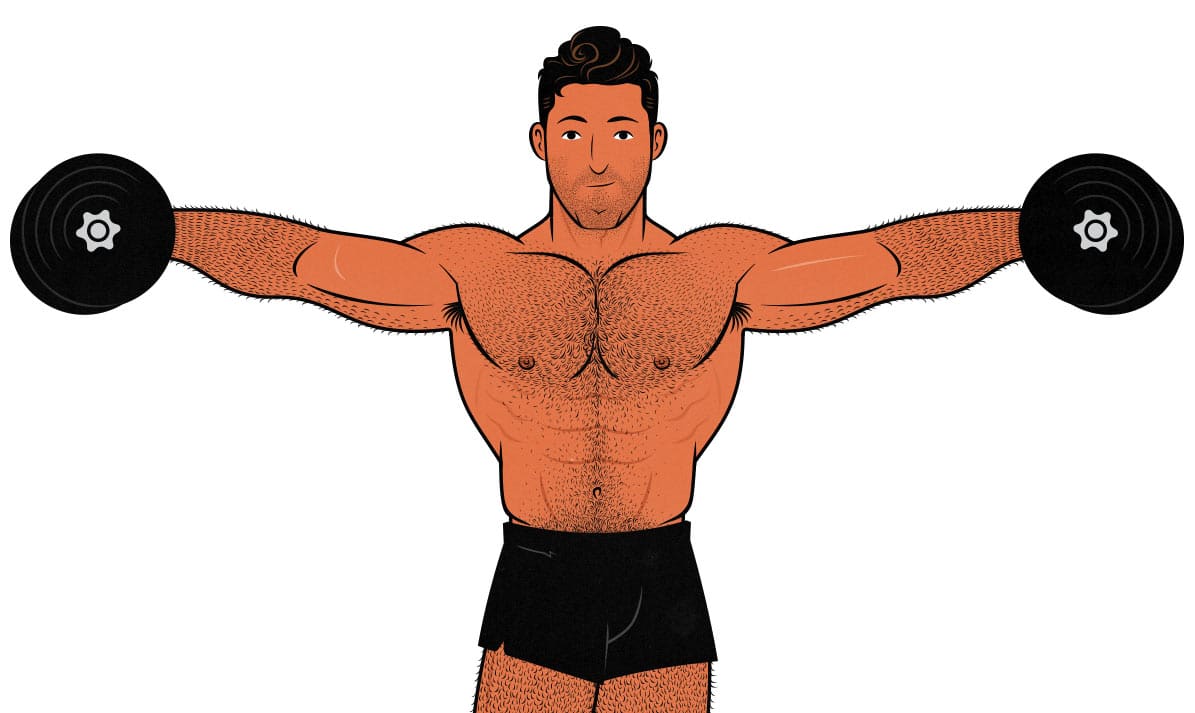
That’s why lateral raises are oft considered the best side delt exercise. And that’s true—they are. But we can take it a little further than that. Some lateral raise variations are rather strange, and you probably haven’t heard of the best ones.
The Overhead Press
The overhead press is the best overall shoulder exercise. It works your front delts, side delts, upper chest, and almost all your postural muscles, stimulating a tremendous amount of muscle growth. It’s also great for training the muscles that keep your shoulders healthy, such as your serratus anterior. It’s a tremendous exercise.
The dumbbell overhead press is the best variation to start with. It’s quite a bit easier to learn than the barbell overhead press, and it works just as well, especially at first. Here’s Marco teaching the exercise:
The barbell overhead press is even more stable and can be loaded much heavier, making it more valuable as you grow stronger. Plus, the heavier loads put more strain on your postural muscles, stimulating more overall muscle growth.
Here’s Marco teaching the barbell overhead press:
If you have some sort of overhead press in your workout program, your side delts will get enough stimulation to grow, at least for a while. After that, the overhead press will be enough to maintain their size. If you prefer minimalist workout routines, that’s all you need.
However, the overhead press is almost always limited by the strength of your front delts. You won’t be able to bring your side delts as close to failure, limiting their stimulus. You can speed up their growth by targeting them more directly. That’s where the lateral raise comes in.
The Classic Dumbbell Lateral Raise
The dumbbell lateral raise is the most popular side delt exercise. In fact, it’s one of the most popular bodybuilding exercises of all time. It’s easy to set up, simple to learn, and you can blast through your sets quite quickly—especially if you use giant sets, supersets, or drop sets. All you need is a pair of dumbbells or weight plates.
Lateral raises aren’t quite ideal for stimulating muscle growth—more on that in a moment—but don’t make the mistake of underestimating them. Exercises don’t need to be optimal to be effective. I added 12 inches to my shoulder circumference before I even learned what stretch-mediated hypertrophy was. So can you. But you don’t have to.
Optimizing the Dumbbell Lateral Raise
The problem with the classic dumbbell lateral raise is that it’s hardest at the top of the range of motion, where your side delts are almost fully contracted. That’s great for activating your muscles, but it’s not so great for stimulating them (full explanation).
You can stimulate more muscle growth by challenging your muscles earlier in the range of motion. This is called stretch-mediated hypertrophy. It’s a relatively new area of research, but there have been dozens of studies published over the past few years proving its effectiveness (research breakdown). It’s fast becoming one of the core tenets of exercise selection.
Unfortunately, lateral raises have almost no resistance at the bottom of the range of motion. The weight just hangs down from your shoulder joint. It would be better if the weight were pulling your arms in toward your body, forcing your side delts to fight against that inward force. That’s where the weirder lateral raises come in.
The Best Side Delt Exercise
The Lounging Lateral Raise is the best side delt exercise. It’s a variation of the side-lying lateral raise. By lying on your side, you make the exercise harder at the bottom and easier at the top, stimulating more muscle growth per set.
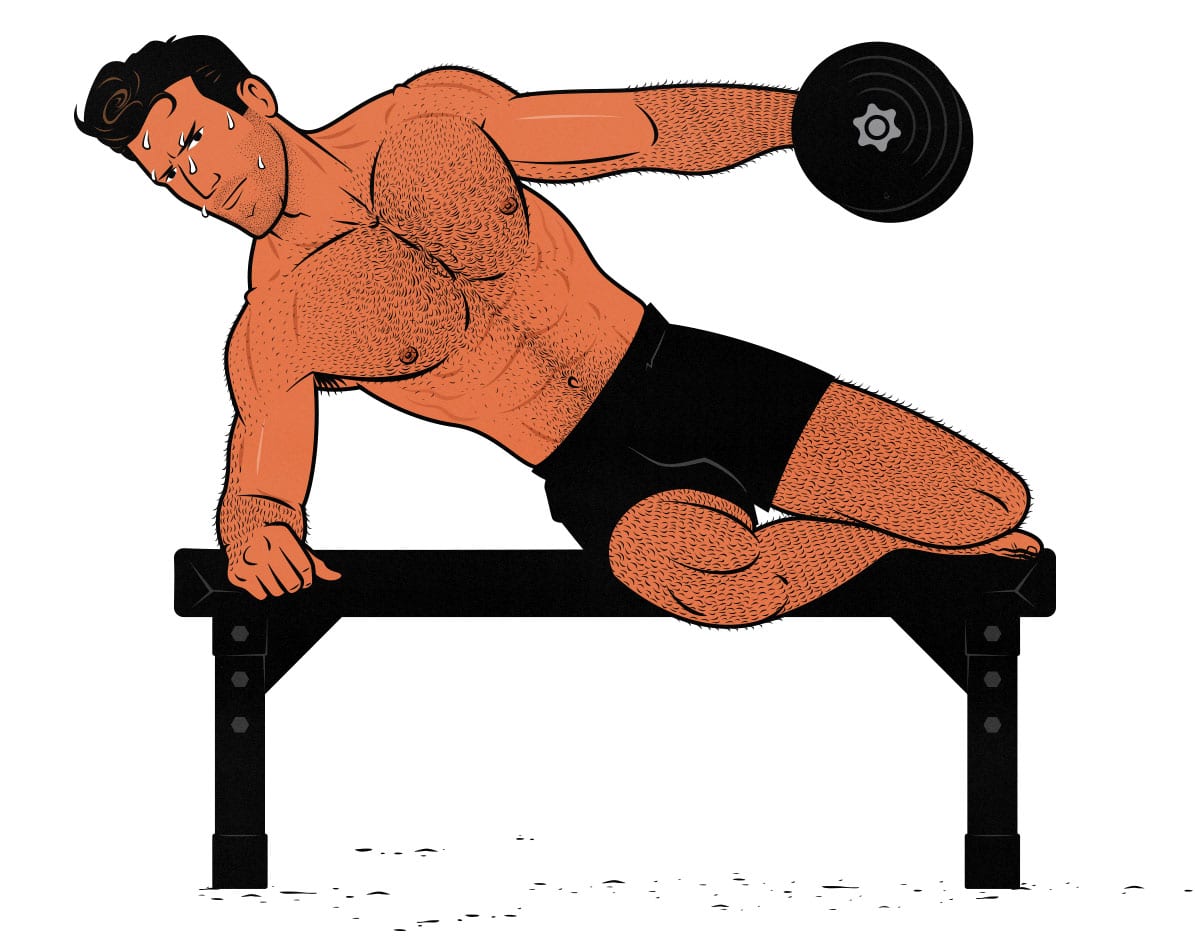
You can prop yourself up on an elbow or lie all the way on your side. You can bring the dumbbell down to rest on your leg or all the way in front of your body. The tutorial video at the beginning of the article teaches all these variations. I recommend choosing the variation that feels the most natural and comfortable, sticking with it for 8–12 weeks, and then slightly adjusting it.
You can accomplish the exact same thing with cables. That’s why cable lateral raises are so popular among evidence-based bodybuilders. I think the dumbbell variation is a little bit better, though. It’s easier to set up and feels a little bit more stable. Plus, you can do them with a dumbbell home gym.
How to Train Your Side Delts With a Barbell
If you have a barbell home gym, you can do your lateral raises with weight plates, using them just like dumbbells. In fact, you can use your weight plates to replace most light dumbbell exercises. I spent several years training that way. (If you want to see how that looks, I show it in the tutorial video at the beginning of the article.)
The Side Delt Workout
Lateral raises are the best side delt exercise, and you can make them even better by lying on your side, improving the resistance curve. Still, it pays to include at least a couple of exercise variations. I like to use a combination of heavier overhead presses and lighter lateral raises.
| Exercise | Sets | Reps |
|---|---|---|
| Overhead Press | 3–5 sets | 6–10 Reps |
| Lounging Lateral Raise | 3–4 sets | 10–15 Reps |
You can do this workout 2–3 times per week. I recommend building these exercises into a more balanced workout routine. That probably goes without saying, but sometimes you find people who only train one muscle. I can’t exactly judge them. I only started training my legs after gaining my first 20 pounds of muscle.
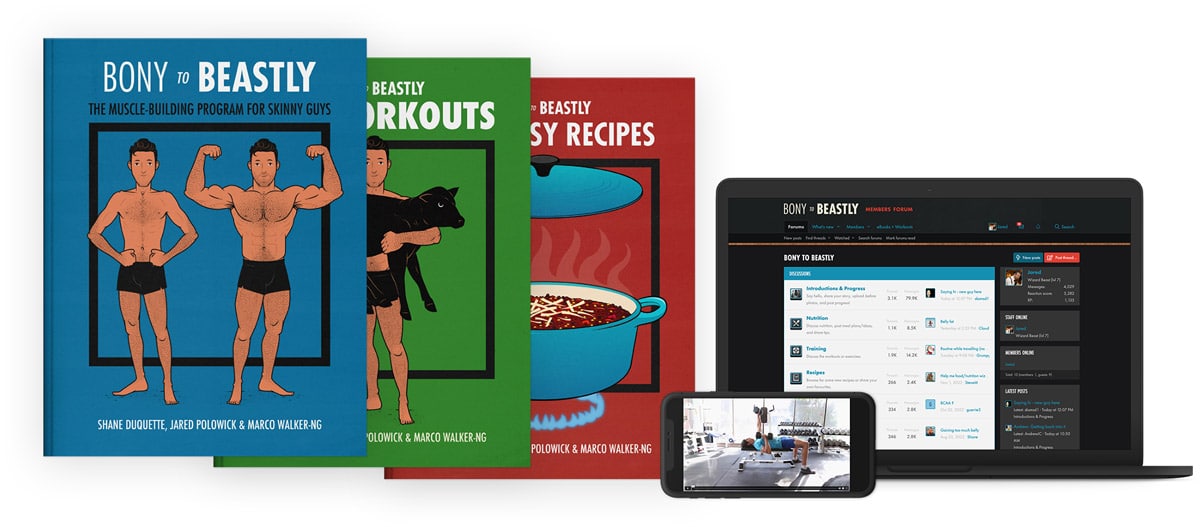
If you want us to walk you through the entire bulking process, check out our Bony to Beastly (men’s) program or Bony to Bombshell (women’s) program. They include a 5-month customizable workout routine, a full bulking diet plan, a bulking recipe book, a deep dive into lifestyle and fitness, and coaching from us throughout the entire program. Your results are fully guaranteed. We have an unconditional refund policy.

